Cultural custodianship through weaving
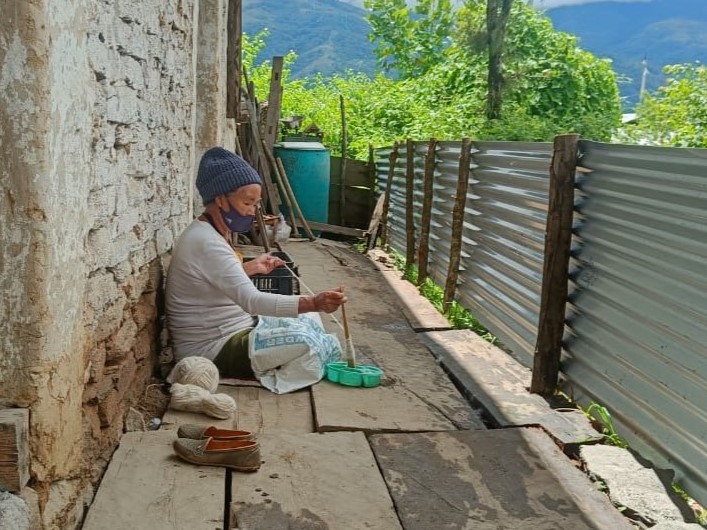
An elderly trainee practices spinning during the training session. Credit - Kusum Valley Devi, WWF - India.
Women’s agency in weaving and rangeland stewardship
Among the high-altitude pastures of Mago-Chu in India, I often found myself struck by how closely the Brokpa pastoralists’ lives were interwoven with their yaks and the rhythms of the land. What might appear to outsiders as ‘craft’ was, for the Brokpas, a way of living knowledge. Their Traditional Ecological Knowledge (TEK) revealed itself in small, precise acts: knowing exactly when to gather the fine down hair (Puh) as yaks shed in spring, or the coarser hair (Tchitpa) once it was no longer essential for the animal’s survival. These fibres were not just raw materials; they carried memory, skill, and identity. A rope or a garment was also a reflection of ecological timing and care.
Yet, as I listened to younger generations, it became clear how fragile this body of knowledge has become. Many had never even heard of Puh. Some looked genuinely surprised when I described how elders once collected it with such care, warning that if gathered too late, the fibre would simply fall to the ground and be lost. Their astonishment made me realise just how quickly knowledge can vanish when intergenerational transmission is interrupted. Herding is in decline, ready-made clothes dominate village wardrobes, and weaving is no longer a shared language between people, yaks, and landscapes. For me, this loss was not simply about a craft disappearing, it was the unravelling of a knowledge system where ecology, animal survival and culture had once been tightly bound.
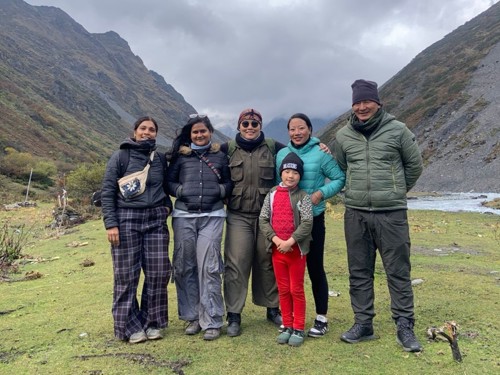
Reviving livelihoods and heritage
It was against this backdrop that we initiated the project ‘Reviving Trans-Himalayan Rangelands: A Community-led vision for people and nature.’ What began as a conservation initiative soon became something much deeper: a way of bringing together livelihoods, ecological stewardship, and women’s agency. Reviving weaving meant reviving memory, skill, and pride. But it also meant creating new opportunities for women, many of whom could not continue pastoralism due to age, health, or childcare.
In Nyukmadung village, I watched as 15 women gathered for a 6-week handloom training, with yak wool brought in from Mago. Their fingers moved hesitantly at first, but soon groups formed, some preparing fibres, others weaving, until the steady sound of weaving filled the room. By the end, they had produced 72 m of fabric. For some, this was the first time they had ever woven, yet it felt less like learning something new, rather reconnecting with something long dormant. The fabrics, showcased at exhibitions and festivals, travelled further than the women themselves, linking these remote highland skills to the language of sustainable fashion.
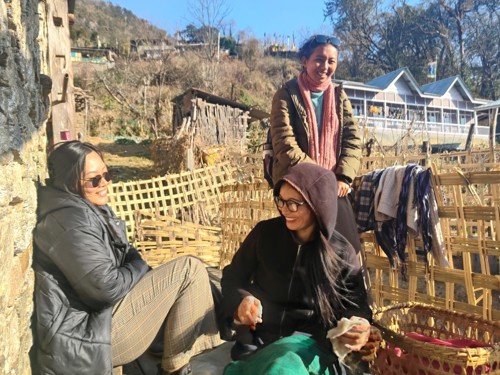
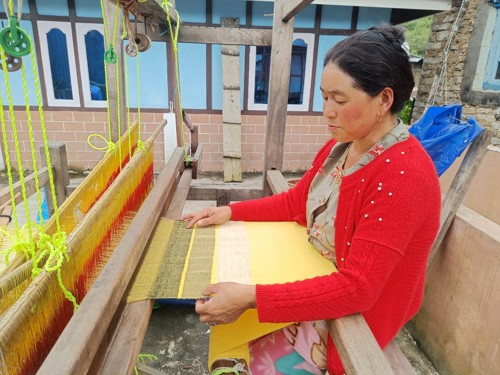
Women’s agency and economic independence
The economic impact was important, but what moved me most were the personal shifts I witnessed. For many women, this was the first time they had earned income from something they enjoyed. As one weaver, Pem Chotton, told me: “Before I used to do household work and farming for the family, which was labour-intensive and unpaid. For everything I had to depend on my husband. Now I work and get paid, which has also brought a sense of respect in my husband’s eyes for me.” Her words stayed with me, because they revealed how income is not only about money, but also about dignity, recognition, and a rebalancing of relationships inside the household.
Even more striking was how weaving sparked desires beyond the loom. Sang Chojjom, a 60-year-old weaver, told me: “We (weavers) all want one day’s leave in a week when we will not work, we will only enjoy and learn to read and write.” This yearning for rest and education was quietly radical. Most women I met had grown up illiterate, their labour invisible and unending. Yet through weaving and the networks and exposure it brought, they began to imagine new possibilities for themselves, not only as workers or wives, but as individuals with the right to learn, to rest, and to grow.
Weaving, conservation, and cultural custodianship
Over time, weaving has come to stand for something larger. These women are no longer just artisans, they are members of the Community Conserved Area Management Committee, where they mentor younger women, guide sustainable grazing practices, and even advocate for coexistence with snow leopards. In their hands, weaving, rangeland management, and conservation are not separate spheres but a single, interwoven fabric.
As a researcher, what I carry from these encounters is the recognition that weaving is never just about textiles. It is about TEK encoded in fibres, about women’s often-overlooked role as custodians of both culture and rangelands, and about the resilience that emerges when heritage becomes a source of livelihood and pride. Watching Brokpa women weave, I felt as if they were not only producing cloth but also stitching together strands of identity, ecology, and future possibility. In doing so, they remind us that conservation is not just about protecting landscapes - it is also about sustaining the cultural and human threads that give those landscapes meaning.
Written by Kusum Valley Devi. For more information on this Darwin Initiative Main project 30-018, led by World Wide Fund for Nature (WWF) - UK, please click here.
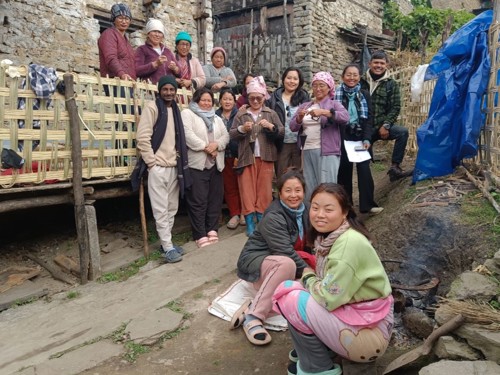
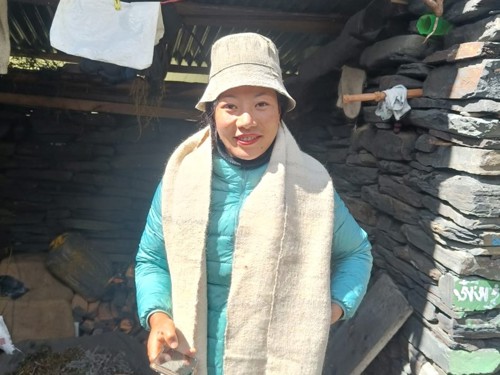
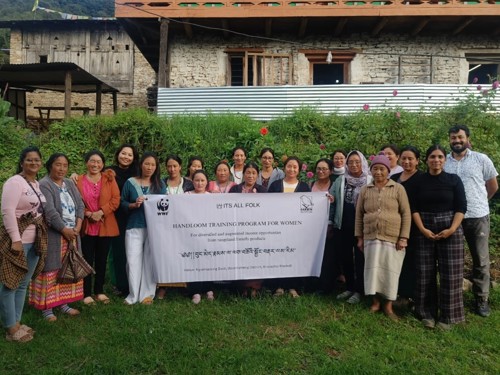
 Back
Back